Samsung Galaxy Z Fold 6 Review: Definitive Edition
We may earn a commission if you make a purchase from the links on this page.

What you'll find in this Galaxy Z Fold 6 review
Welcome to our super-in-depth Samsung Galaxy Z Fold 6 review! In it, you'll find all the standard tests, evaluations, and expert commentary you know and love. In addition, we've enhanced this review with a number of new, extra features designed to give you an even fuller idea of how the Z Fold 6 performs across all areas.
In addition to all the standard review components, inside you'll also find the following unique features:
- Detailed, objective overall and per-aspect evaluation of the Z Fold 6 (e.g. camera, display, performance, etc.)
- Detailed display quality measurements (max/min brightness, color temperature, Delta E, color gamut charts)
- Exclusive close-up photography of all Fold 6 design components (e.g. camera, hinge, ports, etc.)
- Multiple photos of the Z Fold 6 against its predecessor and rivals, such as Fold 5, Pixel Fold and Honor Magic v2
- In-depth, objective PhoneArena Camera Score benchmark results, camera samples from all cameras and full-resolution sample downloads
- Performance benchmarks and expert impressions, thermal management and heat-map under load; storage speed measurements
- Multi-scenario, objective PhoneArena Battery Score measurements of battery life, 15- and 30-min charging rates; wired and wireless charging speeds
- Downloadable samples of loudspeaker sound test and microphone recording quality test
Starting July 24, the Galaxy Z Fold 6 will be available from $1900 for the 256 GB model, after an unfortunate price hike of $100 this year. This means the 512 GB model comes in at $2020, while the top-of-the-line 1 TB model reaches the imposing price tag of $2260. While we were hoping foldables will start getting cheaper soon, this price increase seems to suggest we aren't there yet.
The Galaxy Z Fold 6 receives high marks for its well-thought-out design and better battery life, but it receives lesser marks for its unaltered camera setup and slower charging times.Disclaimer: We use a new review rating system at PhoneArena, which is why the total score of all devices tested under this protocol is lower than you might be used to. We believe it's a better system, covering a number of categories and providing a holistic view of the device, and we encourage you to look at the scores in context, rather than focusing on the number. You can learn more about our PhoneArena Review Score here.
Don't be fooled for a second that the Z Fold 6 has a low rating – that's just how our sophisticated and objective rating system works. Be sure to read where it says "Why the score?" under the numerical scores. There, you'll see the additional context that the Galaxy Z Fold 6 actually scores about 4.4% higher compared to what most other products around that price category score.
Also read:
So that's an important detail when we think about foldables, because you might say: how come PhoneArena rates the cutting-edge Z Fold 6 a 6.8, and a way simpler product like, say, the Pixel 8a a 6.5. We obviously don't mean to say they perform the same or have comparable features, but when you consider the Z Fold 6 comes in at $1900 and the Pixel 8a at $500, the scores suddenly start making a lot of sense, in terms of rating the level of value that you're getting out of the product.

Galaxy Z Fold 6 Specs
Improvements where it counts
Тhe Galaxy Z Fold 6 specs gain ground in some of the most important areas. The phone comes with a slender body, upgraded cover and main displays, and a faster Snapdragon 8 Gen 3 for Galaxy chipset.
| Specs | Galaxy Z Fold 6 |
|---|---|
| Size and Weight | Folded: 2.68 x 6.04 x 0.48 in (68.1 x 153.5 x 12.1 mm) Unfolded: 5.22 x 6.04 x 0.22 in (132.6 x 153.5 x 5.6 mm) |
| Weight | 239 g |
| Display | 6.3" external 7.6" internal |
| Processor | Qualcomm Snapdragon 8 Gen 3 For Galaxy |
| Software | One UI 6 / Android 14 |
| Cameras | 50 MP main 12 MP ultra-wide 10 MP 3x telephoto |
| Battery Size | 4,400 mAh |
| Charging Speeds | 25 W wired charge 16 W wireless charging |
| Price | Starting at $1899 for 256 GB / 12 GB RAM |
Galaxy Z Fold 6 Design and Display
New hinge and screen improvements make this the most reliable Galaxy Z Fold yet
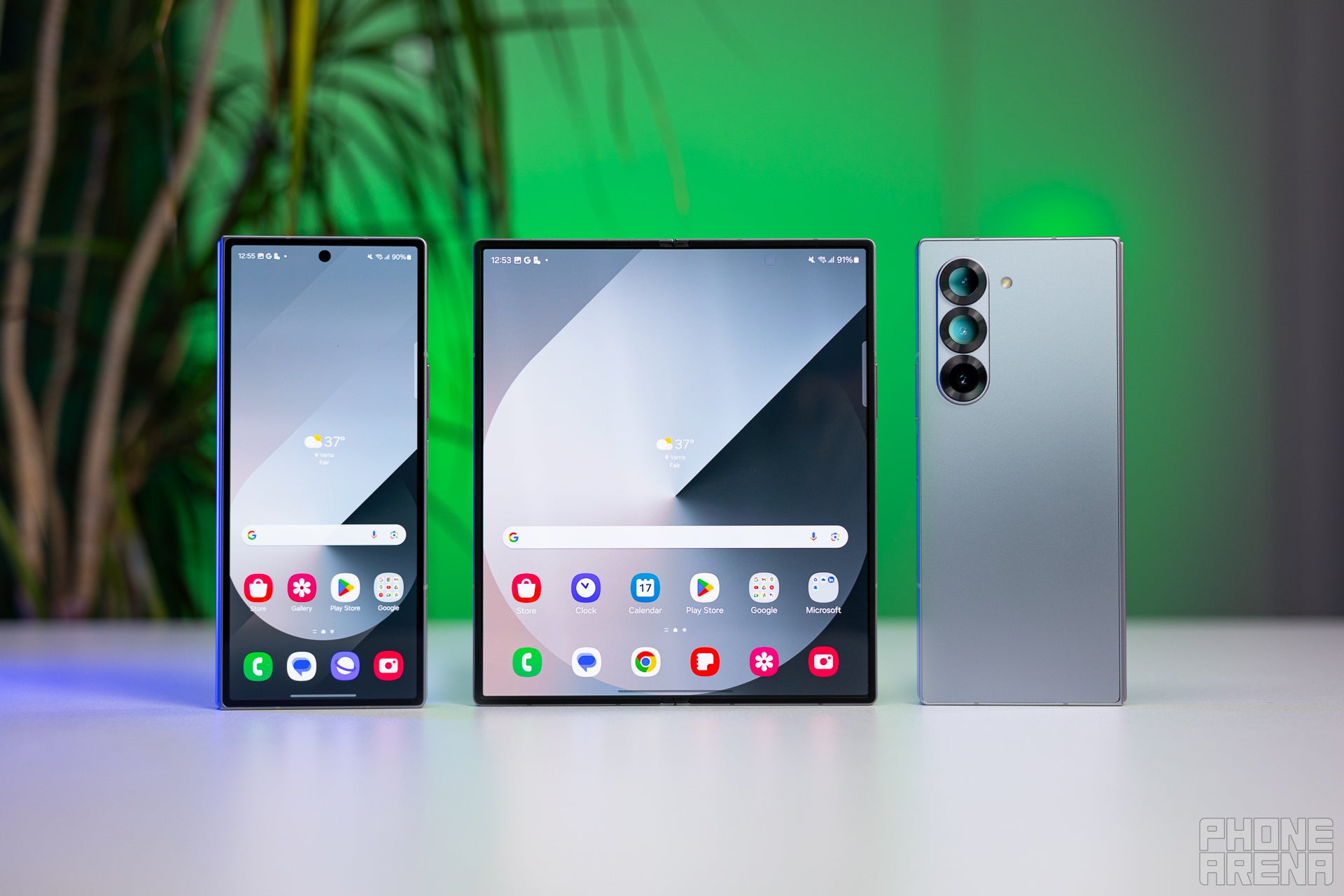
Design and display: this is the part that makes or breaks a foldable phone.
Ever since other players entered the foldable market, such as Huawei, Honor and Oppo/OnePlus, Samsung hasn’t really had the most technologically advanced folding design. In fact, the company has often been criticized for slow innovation on this front.
The Galaxy Z Fold 6 may not be launching Samsung into the stratosphere, but it sure represents a very meaningful upgrade, largely bringing it in line with the best offerings out there on the market.
Size is a big consideration for a foldable, so it’s great that the Fold 6 has lost fat in all the right places. It’s now thinner when folded, at 12.1mm, as well as unfolded at just 5.6mm. This is about on par with one of its major rivals, the OnePlus Open, but still not as thin as some other products found on the global market, such as the Honor Magic v2.
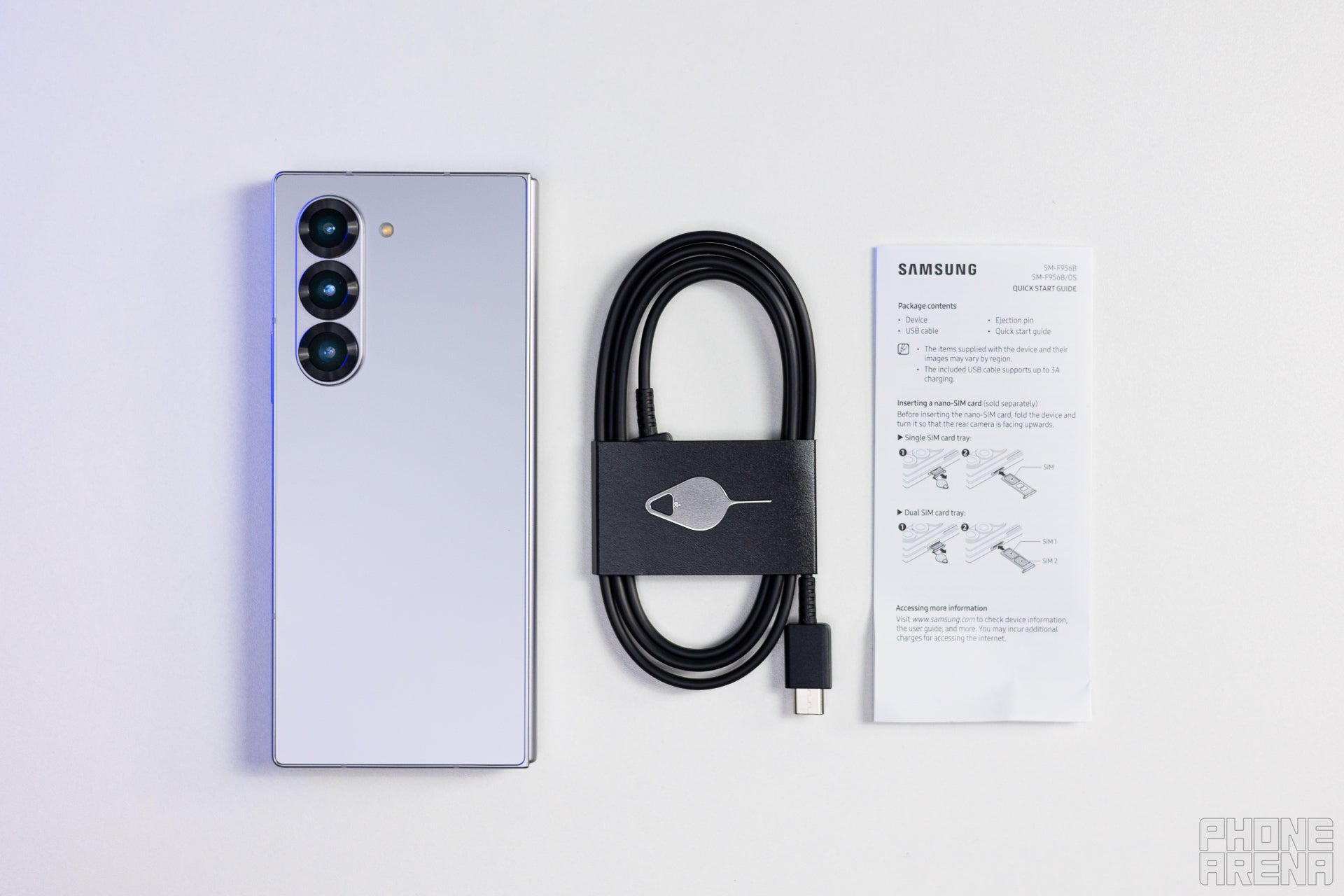
Regardless, the Galaxy Z Fold 6 feels satisfyingly slender, especially when you also factor in its reduced weight of 239g, down from the Fold 5’s 253g. This is a huge achievement, considering the iPhone 15 Pro Max weighs 221g. Now, the Fold 6’s weight is pretty much on par with that of its biggest rivals.
- Also read: Galaxy Z Fold 6: Size Comparison
The Dual Rail hinge design has been improved: Samsung has managed to reduce the number of components needed, while making it stronger, lighter and more resistant to shock. The hinge mechanism of the Z Fold 5 was already quite good, but that of the Z Fold 6 feels even snappier and more stable. Opening and closing the Fold 6 feels really satisfying.
The only sad news here is that we don’t get dust resistance. There were some rumors prior to the phone’s official announcement which made us hopeful that the Fold is going to become the first big foldable phone to unlock this achievement, but alas, all we’re getting is IP48. Last year, the Fold 5 came with IPX8, where the X simply means that the device hasn’t been officially tested or certified for any degree of solid particle resistance. The 8 means it’s very much water-resistant, which is awesome.
Z Fold 6 vs rivals
The Fold 6’s IP48 means Samsung is slowly working towards the milestone we’re all waiting for, as it’s managed to get it officially certified for resistance against solids, but the 4 only means it’s protected from “tools and small wires greater than 1 millimeter.” Doesn’t sound very reassuring, does it? Well, it can’t be easy business making a foldable — a device with so many complex and moving parts — sealed from tiny particles, but I’m sure we’ll eventually get there. Perhaps next year.
While there were rumors of a titanium body, the Galaxy Fold 6 actually uses an enhanced version of the Armor Aluminum material, which is said to have improved scratch resistance. The cover screen of the Z Fold 6 is protected by Gorilla Glass Victus 2 (also applies to the back of the phone), and this is where fans (and critics) of the series will be happy to learn that dimensions are getting bigger, as the cover screen has grown from 6.2” to 6.3”.
This might not seem a lot, but I think that combined with the more rectangular shape, there’s definitely a perception of more screen real estate. Now, don’t get me wrong, the cover screen of the Fold 6 still has that signature narrow aspect ratio, but it’s definitely a bit more convenient to operate now. A narrow front screen allows the otherwise bulky foldable phone to be easier to hold and keeps its size in check, so I get why Samsung isn’t willing to completely part ways with that trademark narrow front display.
This slight increase of the width of the phone naturally leads to an increased width of the main, internal display. Overall, when unfolded, the Galaxy Z Fold 6 looks slightly wider now, with its main display staying technically the same size at 7.6”, but now having an aspect ratio of 20.9:18, compared to the Fold 5’s 21.6:18.
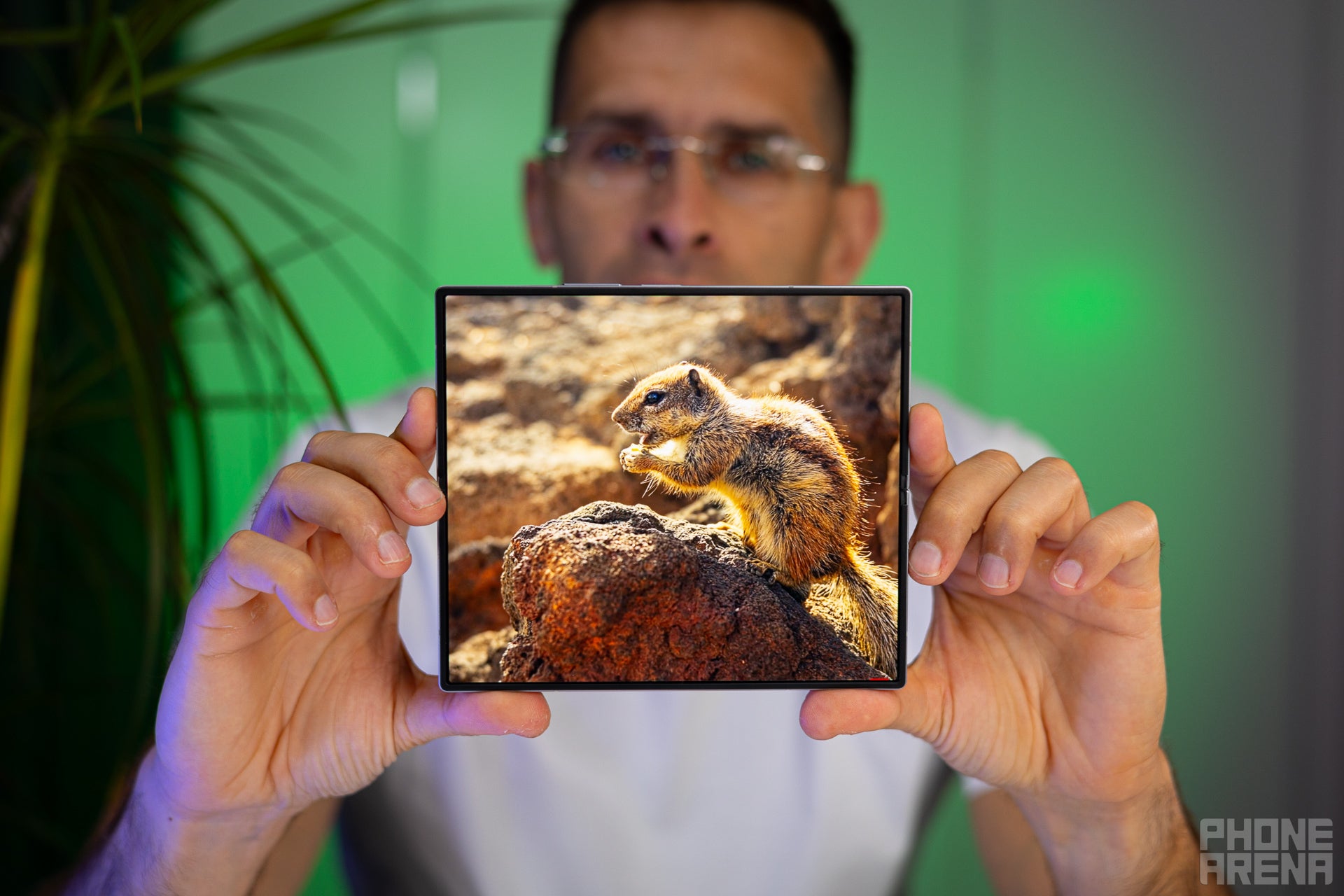
Display Measurements:
In the Fold 6, Samsung has implemented a new protective layer on top of the main screen, which is thicker and more durable. We don’t know exactly how much more durable it is, but it’s generally supposed to have an enhanced resistance to pressure and sharp objects, including in the folding edge area.
Speaking of the folding edge, the moment you’ve been waiting for: yes, the crease has been reduced! The keyword here is “reduced,” because it’s still there, but it’s a bit less noticeable than that of the Fold 5. This means that the OnePlus Open continues to be the no-crease foldable champ for the time being, but the Galaxy Z Fold 6 is definitely relevant – the crease has been reduced to such an extent that it’s now more than tolerable.
Our objective screen measurements prove Samsung's Dynamic AMOLED 2X screens have gotten even more exceptional. While most quality metrics remain pretty much the same as on the previous model, the improved maximum brightness of about 1500 nits is particularly impressive. This is brighter than most other flagships out there, foldable or not, and equal to the current brightness kings, the Pixel 8 and 8 Pro.
Biometrics: The Samsung Galaxy Z Fold 6 has a very fast and dependable side-mounted fingerprint scanner. Just like with the Fold 5, we don't have any complaints about its performance, except for the positioning, which can sometimes make interacting with the phone a bit inconvenient, say, if the phone is put on a stand or a car mount. But it's nothing you can't get used to.
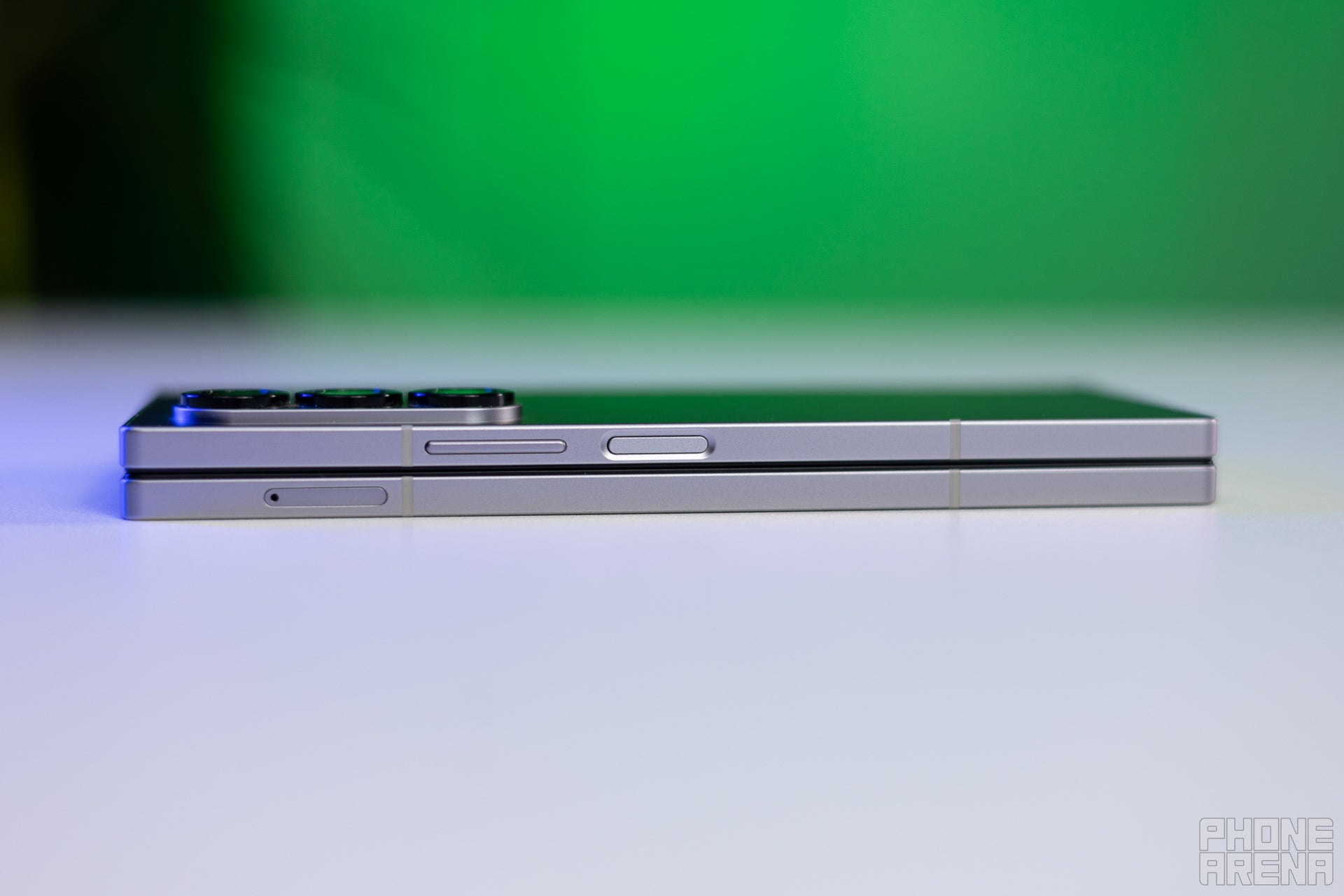
Galaxy Z Fold 6 Camera
Taking a backseat
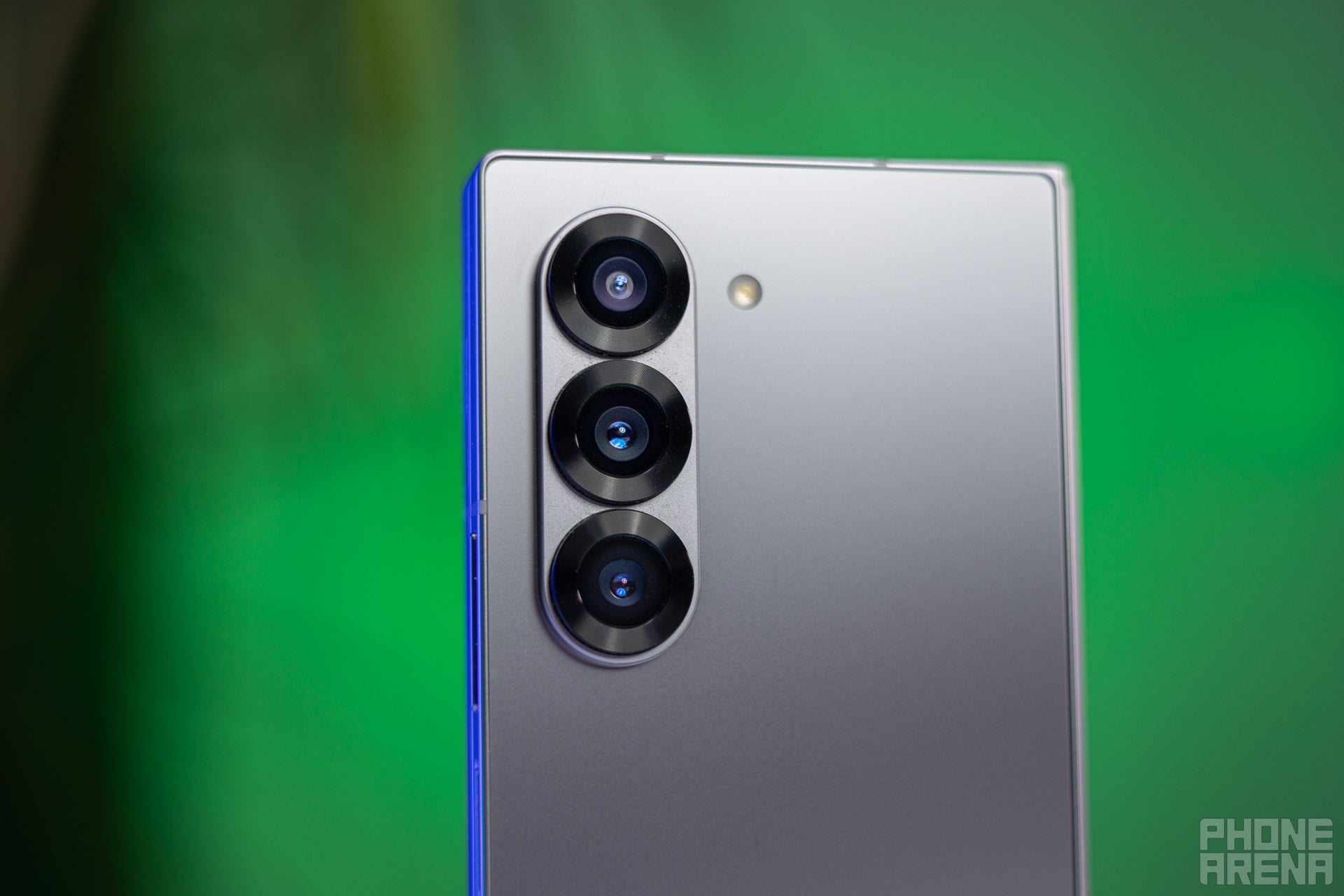
But the Galaxy Z Fold phones still have cameras that can take some seriously awesome shots — they just don't have the most advanced camera sensors and the longest zoom ranges.
Samsung is retaining the familiar 3-camera setup as before, including the 50MP main camera, 10MP 3x telephoto, and 12MP ultrawide. The sensors and the rest of the hardware stack appears to be unchanged from what we saw in the Galaxy Z Fold 5.
Fittingly, the photo and video results we're getting from the Z Fold 6 are more or less on the same level as those of its predecessor. Most often, there isn't much of a noticeable difference between the Fold 6 and the Fold 5, which means we have a capable, but not industry-leading camera on our hands.
Main camera samples
The 50MP main camera, which scores 79 for photos, is actually a pretty strong performer. You can generally expect all-around superb shots out of it, with great colors, great sharpness, exposure and detail resolution. 79 is towards the higher end of main camera scores right now – generally, only the newest and industry leading devices like the Galaxy S24 series or the iPhone 15 generation tend to surpass this level of performance.
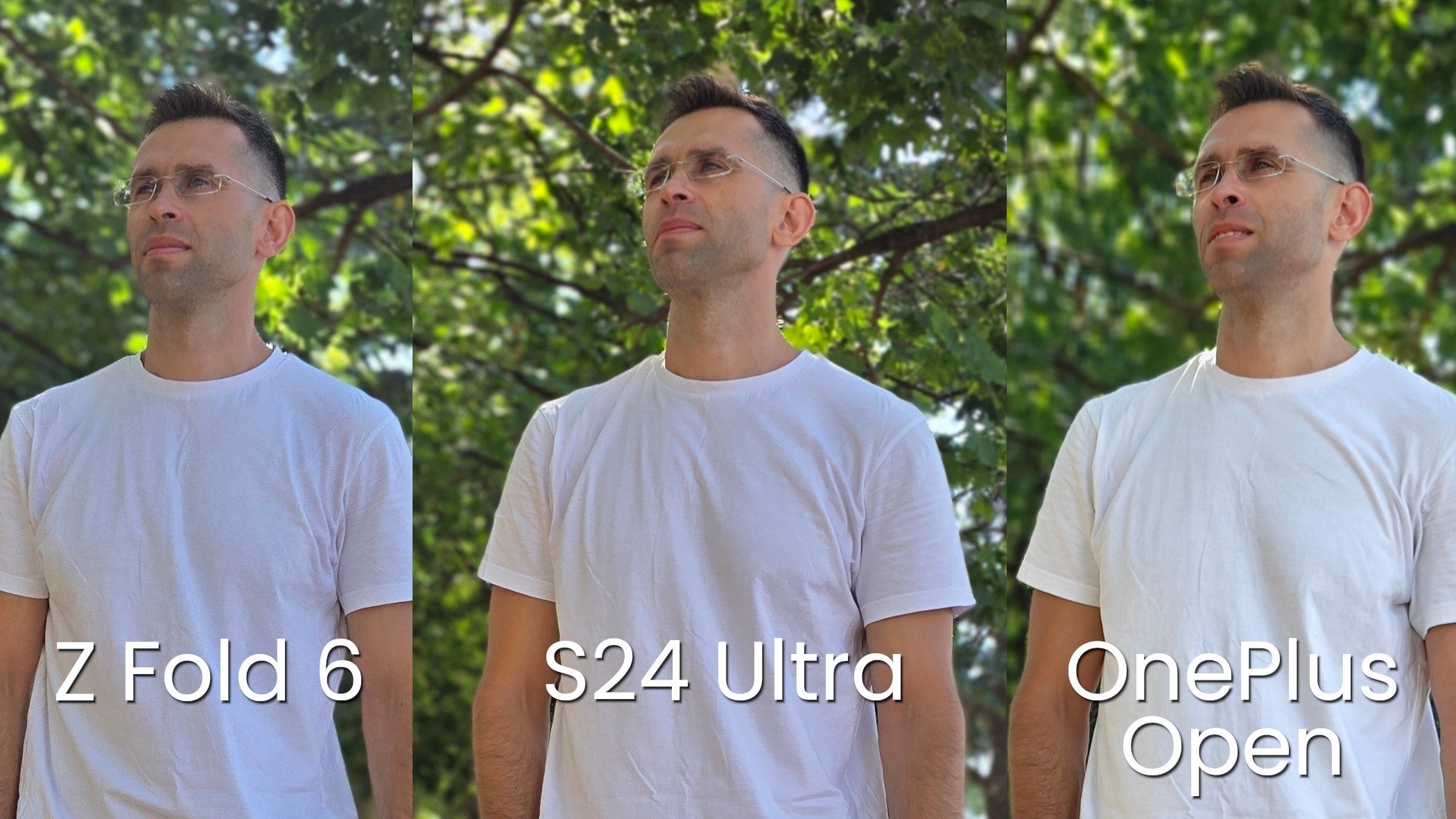
Fold 6 vs S24 Ultra vs OnePlus Open 100% crop comparison
Ultra-Wide sample photos
Sadly, the 12MP ultra-wide is nowhere near as impressive. Generally, most UW cameras aren't anything to write home about in terms of overall image quality, but most of the time that's OK – they serve a mostly specialty purpose. The Z Fold 6's ultra-wide camera is definitely not an exception. The colors are a little bit dull, there's quite a bit of overprocessing, and details are definitely lacking. But if you have to capture an ultra-wide shot – it'll, of course, get the job done.
Low light samples
Our extremely comprehensive PhoneArena Camera Score test shows us there is, indeed, a very slight improvement in some areas, but this is by no means a significant difference. Samsung seems to have dialed back the sharpening a bit, most visible in the selfie and video shooting modes. Detail resolution from the 3x camera has also been enhanced somewhat. The algorithms generally work better, and you'll notice that even at 5x zoom levels, the Fold 6 comes up with a cleaner shot than its predecessor. Again, this is not a drastic improvement, but a visible one.
Zoom camera samples
Overall, as expected, this is pretty much the same camera with a slightly improved software, leading to mostly negligible improvements over the previous generation. Last year's Z Fold 5 managed to score 140 points on our PA Camera Score, while the Z Fold 6 has edged it out slightly with a total score of 142. In comparison, Samsung's top camera phone, the Galaxy S24 Ultra, has a PA Camera Score of 154.
Selfie camera samples
Video recording sample


The Galaxy Z Fold 6 won't break any records when it comes to video recording. It's well-equipped for most scenarios, but if you tend to rely on your phone for a lot of video recording, or if you're super-active on social media and want to appear in the best possible way, the Z Fold 6's video capabilities probably won't help you stand out.
Galaxy Z Fold 6 Performance
Enhanced gaming performance thanks to improved vapor chamber design
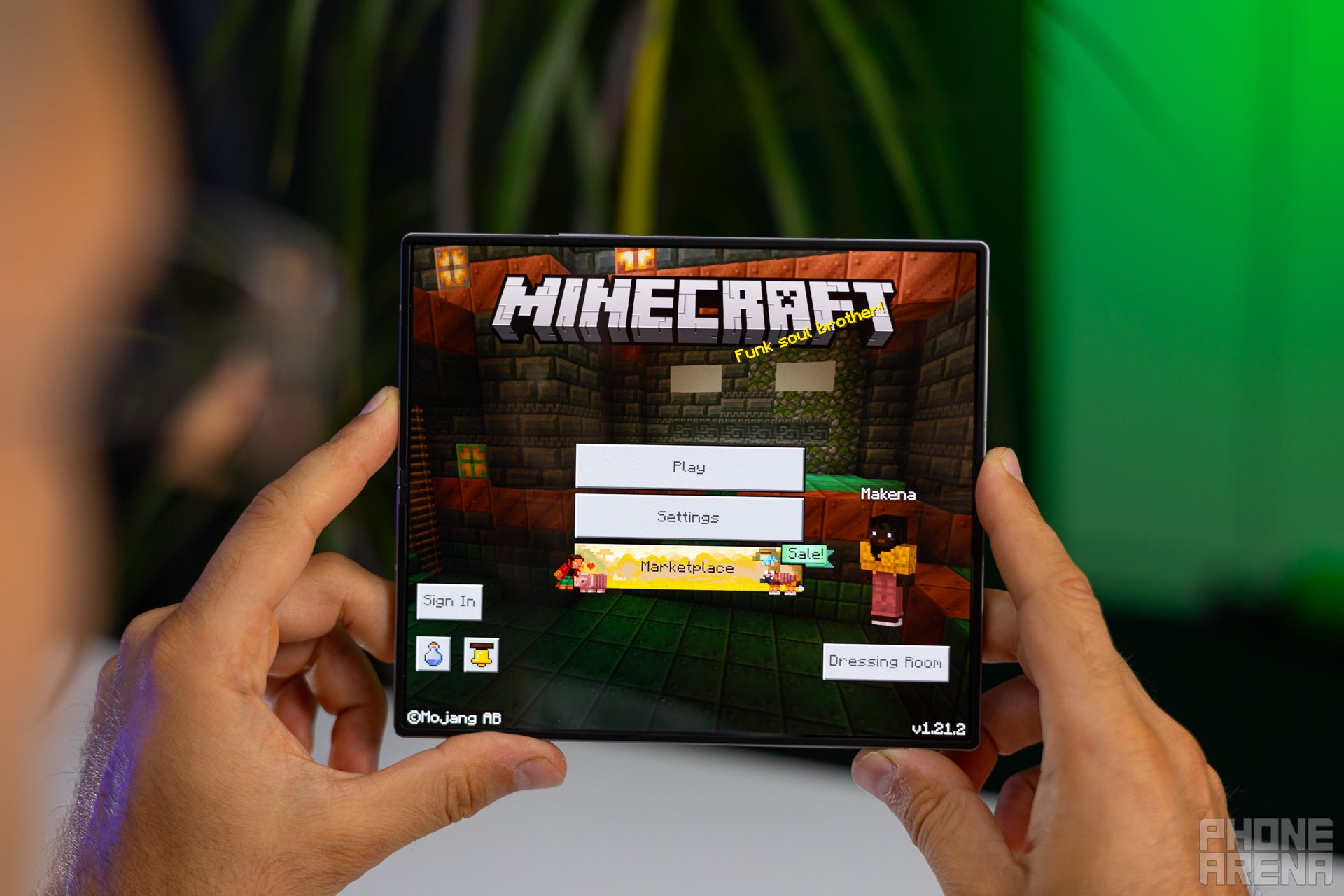
Samsung has a tight partnership with Qualcomm. For the past couple of years, the flagship Snapdragon chips inside Samsung phones have come with the "For Galaxy" moniker. This generally means that the Snapdragons inside the latest Samsung Galaxy phones are running a tad faster than those in phones from other brands.
Galaxy Z Fold 6 doesn’t break this tradition, arriving on the scene with the Snapdragon 8 Gen 3 for Galaxy chipset. It's a pretty powerful SoC with hardware-accelerated ray tracing, Wi-Fi 7, and all the modern bobs and bolts. It gives the Apple A17 Pro a run for its money, even if it’s built on a 4 nm process instead of the newer 3 nm.
Performance Benchmarks:
The new chipset and improved hardware come with a promise of up to 41% in NPU, 25% in GPU and 14% in CPU performance, compared to the Fold 5. In real-life, the Galaxy Z Fold 6 does move like a speed demon. Scrolling around the menus feels extremely fast and fluid.
Judging from our performance benchmark tests, the Fold 6 is extremely capable. It surpasses the previous generation's performance across the board. The most notable improvement is seen in multi-core CPU performance and overall graphics performance. Samsung is positioning the Z Fold 6 as an excellent gaming phone, and the Snapdragon 8 Gen 3 for Galaxy chipset, along with the advanced vapor chamber, definitely deliver.
If you're wondering about that NPU thing, it's the part of the chipset that is most heavily utilized for various AI features. This is why manufacturers double down on creating bigger and faster NPUs.
Thermals
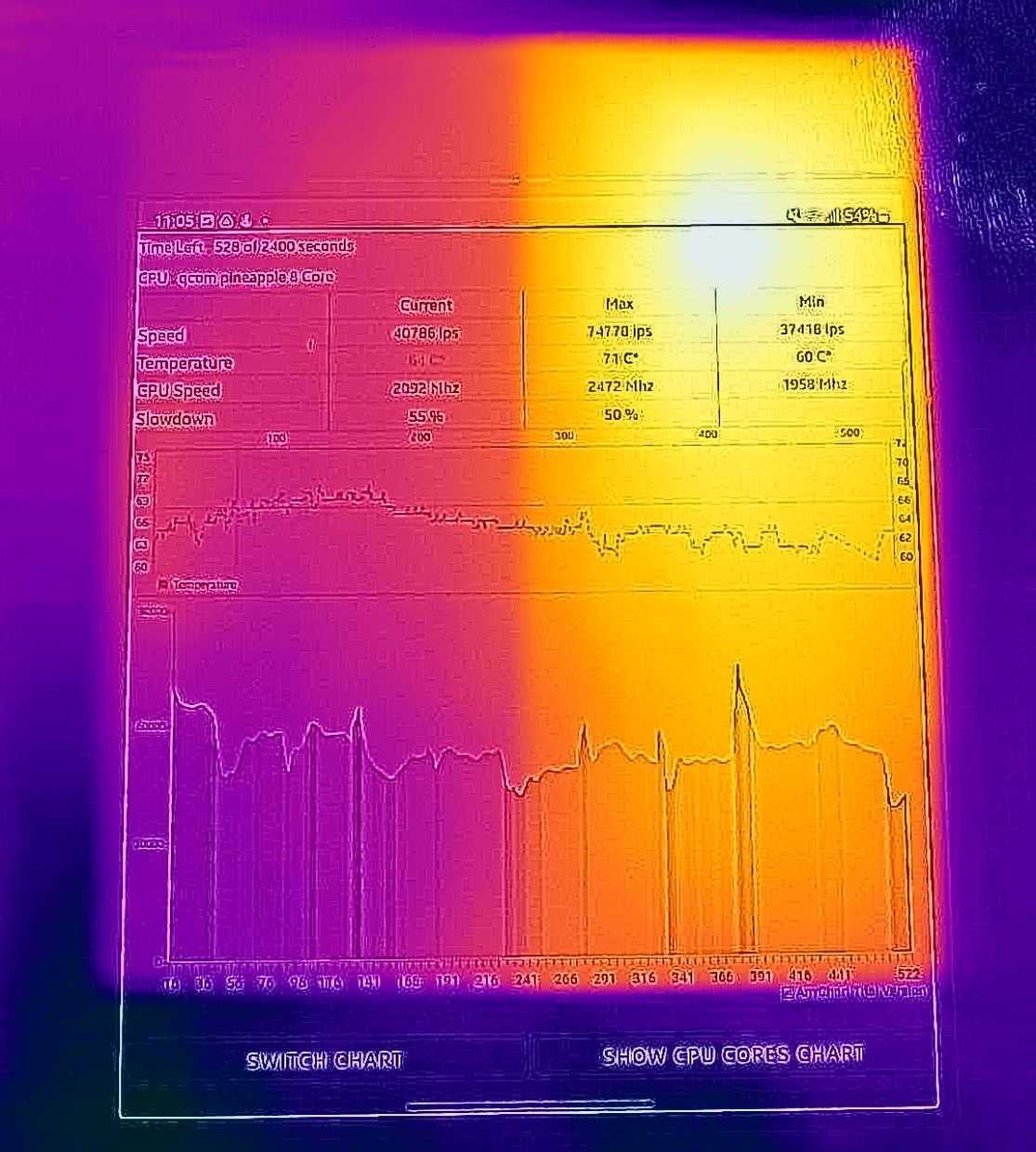
Under normal operating conditions, the Galaxy Z Fold 6 remains pretty cool. Under heavy load, it does get quite warm, but only its right half, as you can see in the heatmap above. That means that if you're using it in portrait mode, you can find relief from the heat by holding the Z Fold 6 with your left hand.
Unfortunately, there won't be much escaping the heat if you're playing a game in landscape mode, because then the warmth will be pretty much evenly distributed across the horizontal. The clever thing to do when going landscape will be to turn it with the physical buttons up (charging port towards the right). This way, you'll be holding the phone by the colder half, with most of the hot half up in the air.
Storage speed benchmarks
Passmark
| Disk Speed Score | Internal Storage Read | Internal Storage Write | External Storage Read | External Storage Write | RAM Speed Score | RAM Read | RAM Write |
|---|---|---|---|---|---|---|---|
| 253078 | 2063 MBytes/s | 1070 MBytes/s | 1478 MBytes/s | 654 MBytes/s | 33619 | 2990 MBytes/s | 2593 MBytes/s |
PCMark Storage 2.0
| Storage 2.0 Score | Internal Sequential Read | Internal Random Read | External Sequential Read | External Random Read | Internal Sequential Write | Internal Random Write | External Sequential Write | External Random Write |
|---|---|---|---|---|---|---|---|---|
| 41445 | 2602 MBytes/s | 38 MBytes/s | 2986 MBytes/s | 40 MBytes/s | 2768 MBytes/s | 71 MBytes/s | 2652 MBytes/s | 67 MBytes/s |
CPDT benchmark
| Sequential Write | Random Write | Sequential Read | Random Read | Memory Copy |
|---|---|---|---|---|
| 910 MBytes/s | 37 MBytes/s | 1.43 GBytes/s | 34 MBytes/s | 16.36 GBytes/s |
Galaxy Z Fold 6 Software and AI
All efforts have gone towards AI features
The Galaxy Z Fold 6 is getting the same AI features we know from the Galaxy S24 line (but optimized for the bigger screen), plus some new ones.
Of course, we get the usual suspects and fan favorites like Circle to Search (easy search for everything on your screen), Browsing Assist (a web page translator and summarizer), Transcript Assist (easy meeting transcription, summary and translation) and Note Assist (auto-formatting, summarizing, sketch to image). The great news is Samsung has done some work to optimize these features for the Fold 6’s expansive canvas. For a complete rundown of all current Galaxy AI features, read our article “Galaxy AI: Everything you need to know about Samsung's new AI system.”
In addition to the familiar AI photo editing options, the Fold 6 is also debuting Portrait Studio, which allows you to quickly generate an AI portrait for yourself or someone else out of a real photo. You can generate AI portraits in a few different styles: comic, 3D cartoon, watercolor or sketch.
The AI Interpreter is also getting an interesting upgrade. It’s that feature where you speak in your language to the phone, and it automatically translates whatever you’ve said in another language. With the Z Fold 6, you can use the so-called Conversation mode to put the device on a surface and close it halfway (making it sit sort of like a laptop), and then as you speak in your language and watch the transcription of what you’ve said appear on the screen facing you, the other person will be seeing the translated text appear on the cover screen facing them. This seems like a cool little touch that might prove to be useful in some niche situations.
Galaxy Z Fold 6 Battery
The same 4,400 mAh battery with the same 25W charging speed
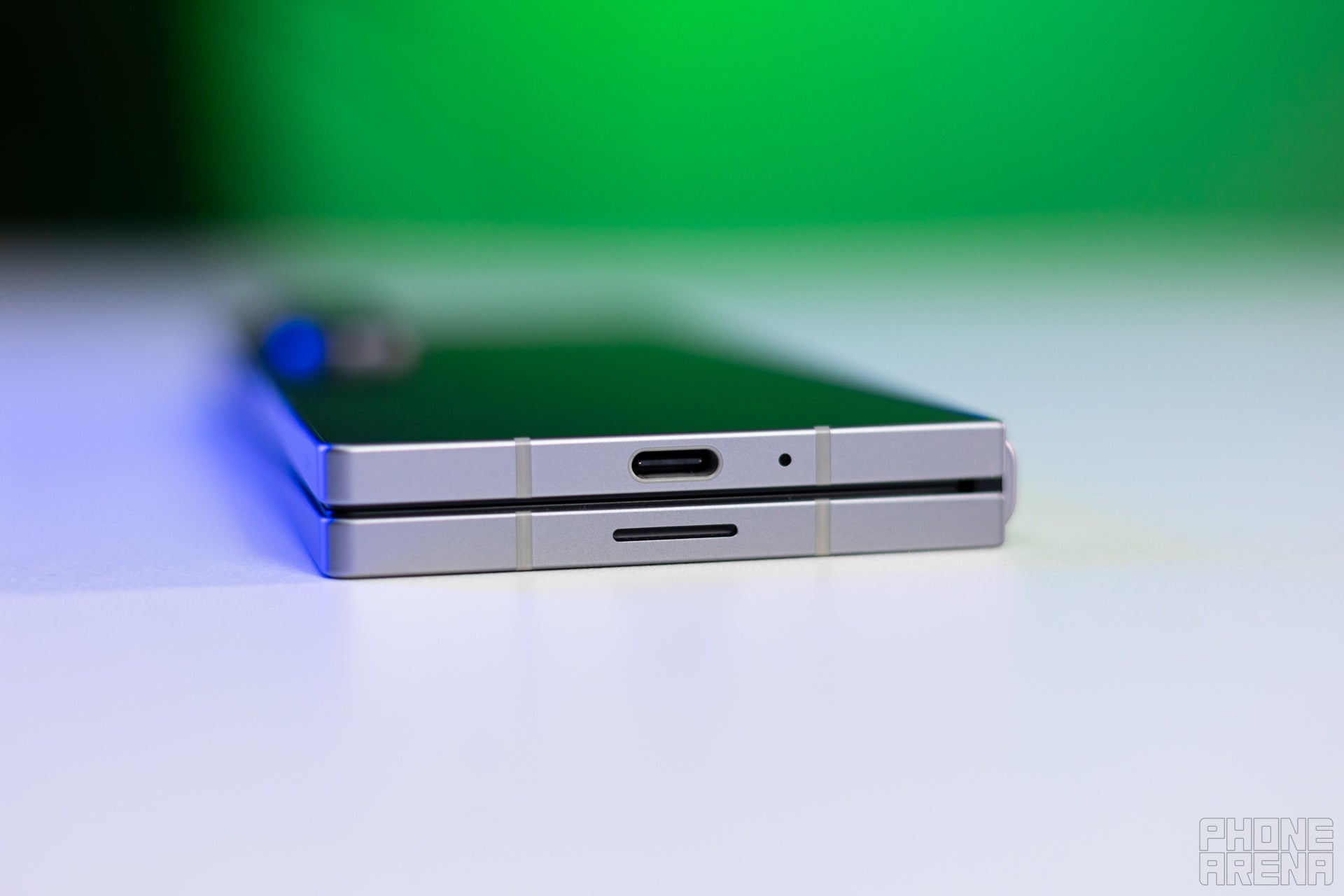
| 15-Min Wired Charging | 15-Min Wireless Charging |
|---|---|
| 25% | 4% |
On the bright side, the new Snapdragon 8 Gen 3 chipset, along with the better thermal management seems to be working wonders for the Z Fold 5, leading to a considerably increased battery life, compared to the Fold 5. After subjecting it to our PhoneArena Battery Test, we can estimate that battery life on the Fold 6 has increased by about 18%, as it gets a score of 5h 33mins, versus the Fold 5's 4h 41mins.
We're seeing a meaningful improvement across all three use cases that we test for: web browsing, video playback and 3D gaming. This result brings the Z Fold 6 in line its rival, the OnePlus Open, and slightly ahead of its other rival, the Google Pixel Fold (5h 22min). Just for comparison, Samsung's top regular flagship, the Galaxy S24 Ultra, offers better battery life – its PA Battery Score is 6h 46mins, but of course, that is to be expected considering the Fold 6 has to power that gigantic internal display.
Another uninspiring news has to do with the speed of charging, which remains at 25 watts. While not too bad, as you can get from 0% to 50% in about half an hour, it’s definitely less impressive than the OnePlus Open’s SuperVooc charging speeds of up to 67W. Wireless charging is there, but it's also not particularly fast, being capped at 15 watts.
Galaxy Z Fold 6 audio quality
The speakers on the Z Fold 6 sound better than those of its predecessor. They seem a bit more balanced overall, with highs that aren't necessarily as crispy, but with mids and lows that definitely sound a bit fuller.
Sound quality tends to remain very good even at the highest loudness levels, as there is no audible distortion.
LISTEN HERE: Galaxy Z Fold 6 microphone quality recording
LISTEN HERE: Galaxy Z Fold 6 loudspeaker quality recording
Should you buy the Galaxy Z Fold 6?

Samsung’s Galaxy Z Fold 6 is absolutely a worthy successor to the Fold 5. That said, the competition in the foldable space has become fierce, so you can say there's some pressure riding on the Z Fold 6 release.
With a new, lighter, thinner and more durable design, as well as state-of-the-art performance and software support, the Galaxy Z Fold 6 is, without a doubt, a terrific option for users looking to grab a capable and well-supported foldable smartphone.
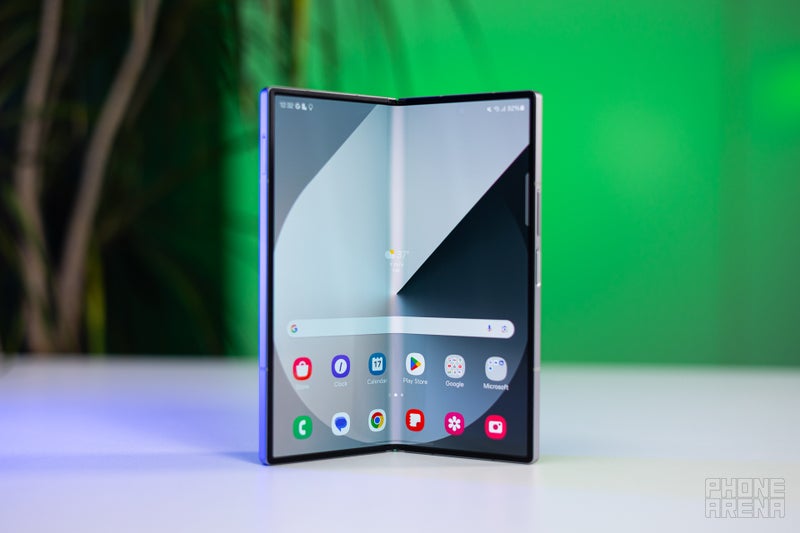
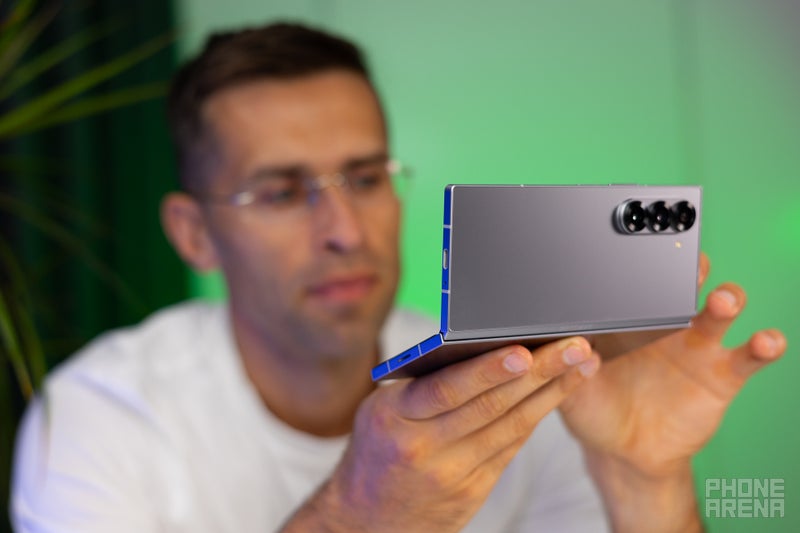












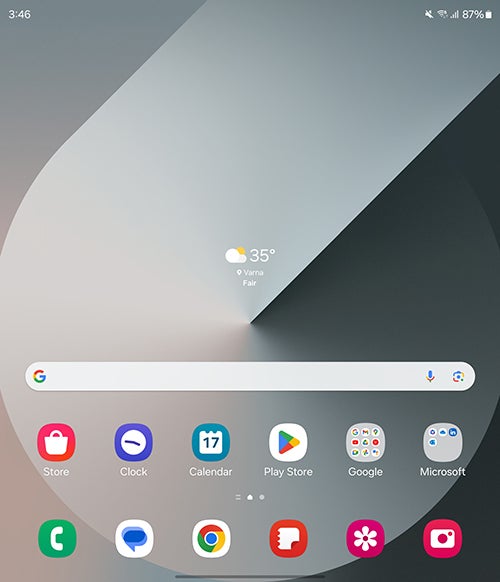
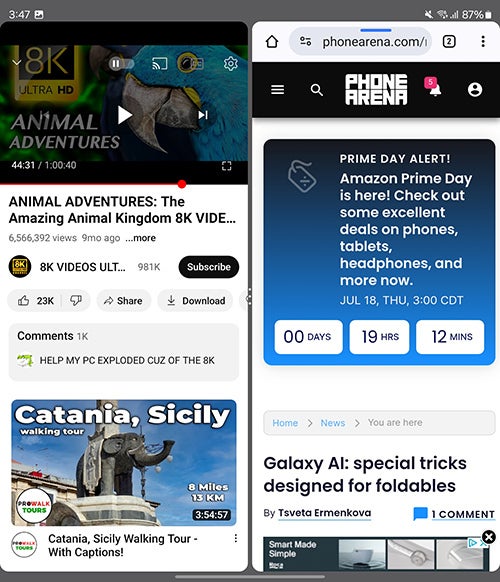
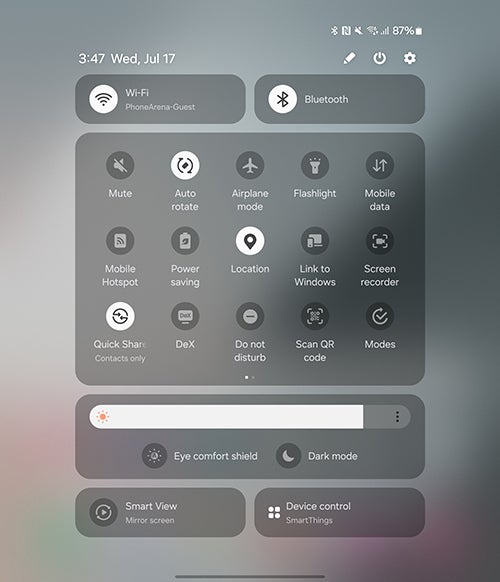
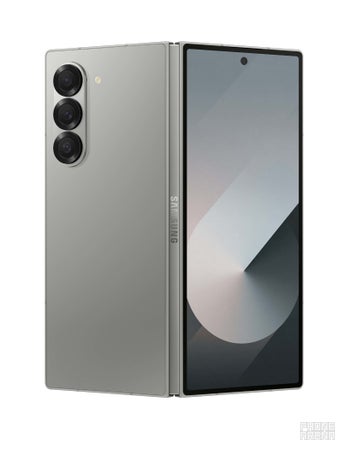


















Things that are NOT allowed: